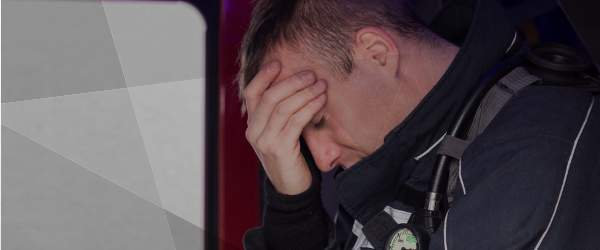5 Reasons We Need to Talk about PTSD in EMS & Fire
A recent study by EMS1 found that provider mental health was ranked as the most significant issue facing EMS by 52-67% of respondents in all sectors
Was this information valuable?

A recent study by EMS1 found that provider mental health was ranked as the most significant issue facing EMS by 52-67% of respondents in all sectors. Another study estimates a PTSD rate of 20% among EMS Pros. Compare that to the rate for the general public of 3.5%. While these are early studies, and we need to be careful with statistics from preliminary research, this data supports the high level of concern among our EMS community.
We talked to Jim Marshall, MA, L.L.P., a licensed mental health professional for over 30 years. He will be offering a pre-conference course in Resilience Training for EMTs & Paramedics as well as delivering a Keynote address on Rethinking “Post Traumatic Stress Disorder” at ZOLL SUMMIT 2019. Based on his extensive experience training thousands of first responders, he shared why it’s important to talk about PTSD in EMS & Fire.
1. PTSD is curable.
First, let’s think about PTSD as PTSI: Post-traumatic Stress Injury. This struggle isn’t about pathology; it’s about being extraordinary humans injured in the line of extraordinary care giving. Now consider this: one of the biggest reasons first responders usually don’t want to talk about PTSD is because they don’t believe you can ever really get over it. It makes sense. Why should smart people waste their time talking about a problem they can’t fix, right? That leads us to the first reason we should be eager talk about PTSD: there’s good news! PTSD can be healed! I mean truly resolved, as in freedom from all the horrific distress related to the worst work experiences, relief from nightmares and flashbacks, the huge hypervigilance, and the battle of avoiding a past we don’t’ want to relive. All that suffering can be relieved with “evidence-based therapy” (EBT).
2. Curing PTSD requires education and resiliency.
The second reason it’s so valuable to talk about PTSD is this: we can prevent it if we’re empowered with the knowledge of the signs, and equipped with resilience skills. In Survive & Thrive I’ll teach our EMS & Fire Pros these evidence-based skills and how to build a Resilient Responder Mindset to buffer the effects of potentially traumatic events.
3. Early signs are pointing to a high rate of suicide in EMS.
This leads to the third reason: preliminary data tell us that there’s likely an extremely high rate of suicide risk in the EMS industry. I strongly believe this is because our EMS Pros have lacked the psychological mindset and skillsets to prevent PTSD, along with the knowledge that we can heal it. Without this knowledge, can you see how a responder could feel hopeless and helpless in the face of their PTSD? I sure can.

4. A culture change is required.
We have to change the first responder culture from the old days when all folks could do is just “suck it up” and push through, resulting in our current struggles with PTSD and suicide. All members of the EMS community, whether personally struggling with PTSD or fortunately unscathed, need to gain this knowledge and skill base. Education is obviously a preventative measure, but it doesn’t stop there. We need our leaders and veteran responders to lead the way in proclaiming a vital message to our nation’s frontline responders:
“We can do better now. We did the best we could then with what we knew then; but we know more now about the help that is there. We’re going to get it for you and we want you to use it. It’s not weakness. It’s wisdom.”
Frontliners need to hear their leaders tell them it’s time to do more than save everybody else – it’s time to save themselves and each other too. In Survive & Thrive we engage as a team--personnel at all ranks/in all roles--in great discussions to build the Resilient Responder Mindset upon new knowledge.
5. It’s time to care for the caregivers.
Here’s the bottom line mission of Survive & Thrive: we’ve got to take care of the people who pour themselves out caring for the rest of us on the worst days of our lives. We need to equip them to take great psychological care of themselves. Just as we invest in EMS technology and equipment to save everyone else, we need to be investing in our EMS Pros with training for self/peer care to help save their lives. I don’t’ see this as optional.
You can find Jim at ZOLL SUMMIT 2019 and the Pre-Conference. Find out more here:

Related Posts
ZOLL Pulse Blog
Subscribe to our blog and receive quality content that makes your job as an EMS & fire, hospital, or AR professional easier.
ZOLL Pulse Blog
Subscribe to our blog and receive quality content that makes your job as an EMS, fire, hospital, or AR professional easier.





